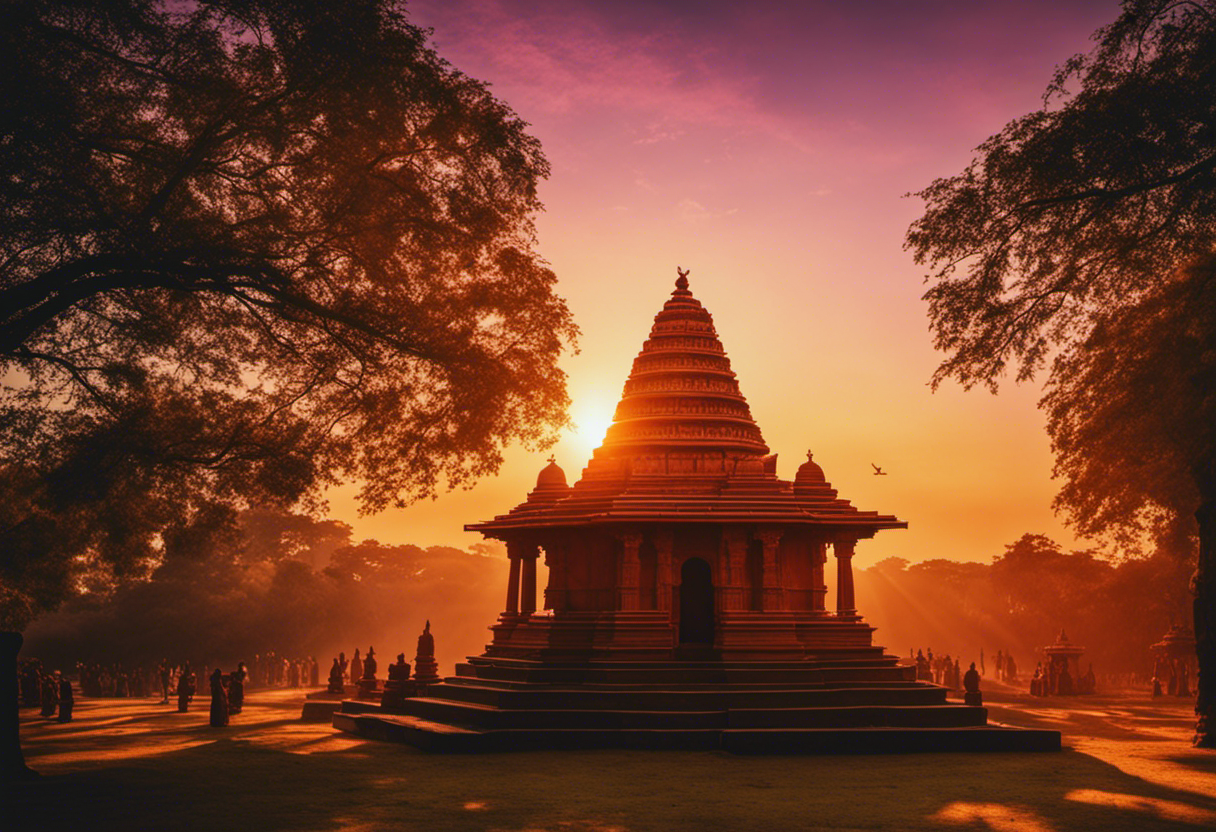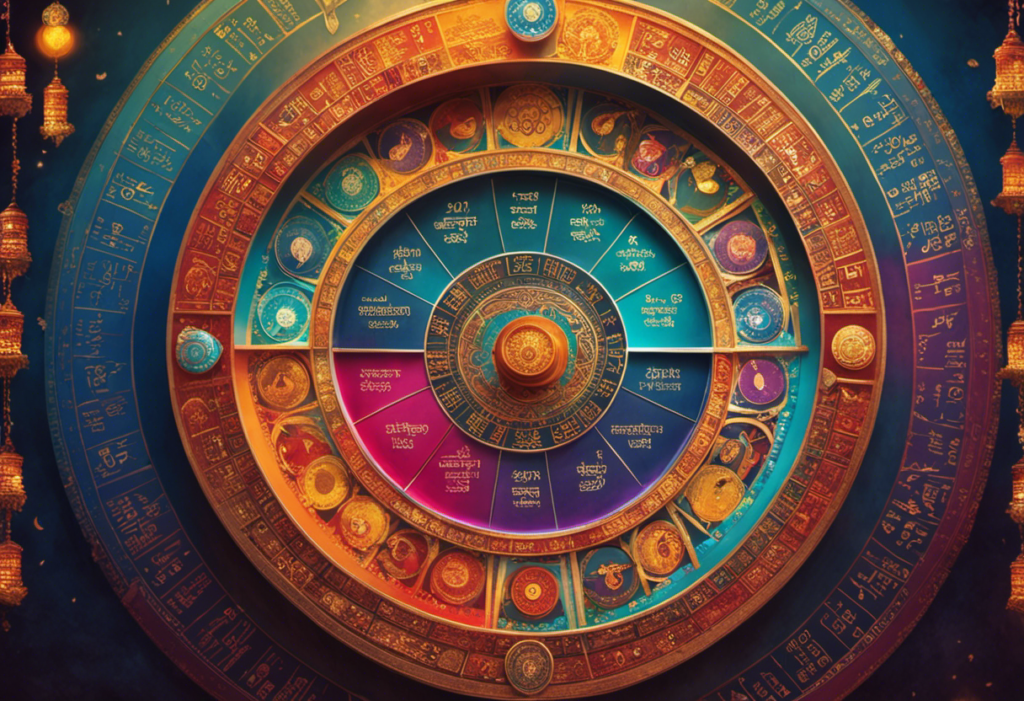In the realm of Vikram Samvat, the ancient Hindu calendar system, the equinoxes and solstices hold profound significance. These celestial events mark crucial turning points in the calendar, impacting the religious festivals, spiritual practices, and cultural fabric of the community.
With the changing seasons and the alignment of the sun, the equinoxes and solstices shape the rhythm of life in Vikram Samvat. Understanding their importance offers valuable insights into the traditions and customs of this rich cultural heritage.
Key Takeaways
- Equinoxes and solstices in Vikram Samvat have cultural and religious significance.
- They influence agricultural practices, festivals, and rituals.
- They symbolize the balance between light and dark and the eternal cycle of birth, death, and rebirth.
- Equinoxes and solstices play a significant role in the calculation of important festivals and religious events in the Hindu calendar system.
The Significance of Equinoxes in Vikram Samvat


One of the key factors contributing to the significance of equinoxes in Vikram Samvat is the equal duration of day and night. Equinoxes occur twice a year, in March and September, when the tilt of the Earth’s axis is neither towards nor away from the Sun. During these times, the length of daylight is approximately the same as the length of nighttime. This balance between light and darkness has a profound impact on the role of equinoxes in Vikram Samvat, particularly in relation to agricultural practices.
Equinoxes play a crucial role in agricultural practices as they mark the transition between seasons. In Vikram Samvat, which follows the Hindu calendar, the equinoxes are seen as important milestones in the agricultural cycle. Farmers rely on the changing seasons to determine the timing of planting, harvesting, and other agricultural activities. The equal duration of day and night during the equinoxes serves as a signal for farmers to prepare for the upcoming season and make necessary adjustments to their farming practices.
Furthermore, the equinoxes also have cultural and religious significance in Vikram Samvat. They are often celebrated with rituals and festivals, which further emphasize their importance in the community. These celebrations not only acknowledge the role of equinoxes in agricultural practices but also serve as a way for people to come together and express gratitude for the abundance and prosperity that agriculture brings.
The Role of Solstices in Vikram Samvat


The solstices play a significant role in Vikram Samvat, marking the changing seasons and the longest and shortest days of the year. These celestial events have cultural and religious significance in the Vikram Samvat calendar, with various celebrations and traditions associated with them.
The solstices are important markers in the Vikram Samvat calendar, influencing the agricultural practices, festivals, and rituals observed during these periods.
Seasonal Significance in Vikram Samvat
The solstices play a vital role in determining the seasonal changes in Vikram Samvat, the Hindu calendar. These significant astronomical events mark the points in the year when the sun reaches its highest or lowest point in the sky at noon, resulting in the longest and shortest days of the year.
In Vikram Samvat, the solstices are celebrated as important seasonal milestones. The summer solstice, known as the Uttarayana, marks the beginning of longer days and is celebrated as a time of abundance and growth. On the other hand, the winter solstice, known as the Dakshinayana, signifies the beginning of shorter days and is associated with introspection and renewal.
These seasonal celebrations reflect the deep connection between nature and the Hindu calendar, highlighting the importance of the solstices in Vikram Samvat.
Cultural Celebrations and Traditions
Significantly, the solstices in Vikram Samvat are commemorated through a variety of cultural celebrations and traditions. These cultural customs play a significant role in marking the changing seasons and are deeply rooted in the beliefs and practices of the people.
During the winter solstice, known as the Uttarayan, people celebrate Makar Sankranti, a festival that marks the transition of the sun into the zodiac sign of Capricorn. This festival is celebrated with great enthusiasm and involves flying kites, sharing sweets, and offering prayers.
On the other hand, during the summer solstice, known as the Dakshinayan, people celebrate the festival of Ratha Yatra, where they pull the chariot of Lord Jagannath.
These seasonal rituals not only provide a sense of cultural identity but also serve as a reminder of the cyclical nature of life and the importance of harmony with nature.
How Equinoxes Affect the Hindu Calendar System


Equinoxes’ impact on the Hindu calendar system is essential to understand its functioning and significance. The Hindu calendar, also known as Vikram Samvat, is a lunisolar calendar that incorporates both lunar and solar cycles. It is primarily based on the positions of the Sun and the Moon relative to the Earth. Equinoxes, which occur twice a year, play a crucial role in determining the dates and timings of various festivals and rituals in the Hindu calendar.
From an agricultural perspective, equinoxes mark the changing of seasons, which is crucial for planning farming activities. The vernal equinox, known as the spring equinox, signifies the beginning of spring and the end of winter. It is a time when farmers start preparing their fields for sowing crops. On the other hand, the autumnal equinox marks the transition from summer to autumn, signaling the time for harvesting.
Equinoxes also have significance in terms of celestial alignment. During an equinox, the Earth’s axis is neither tilted towards nor away from the Sun, resulting in equal day and night lengths. This celestial phenomenon holds religious significance in Hinduism, as it symbolizes the balance between light and dark, good and evil, and the eternal cycle of birth, death, and rebirth.
Solstices and the Changing Seasons in Vikram Samvat


Solstices play a significant role in the Hindu calendar system of Vikram Samvat. They mark the changing seasons and have a direct impact on the calculation of important festivals and religious events.
Understanding the solstices helps in determining the appropriate timing for various agricultural activities and cultural celebrations in Vikram Samvat.
Equinoxes and Solstices Explained
The changing seasons in Vikram Samvat are closely tied to the astronomical events known as equinoxes and solstices. These events mark significant moments in the Earth’s orbit around the Sun and have a significant impact on cultural practices and seasonal ceremonies in Vikram Samvat.
Here are four key aspects of equinoxes and solstices that explain their importance in Vikram Samvat:
- Equal Day and Night: During the equinoxes, day and night are approximately equal in length, symbolizing a balance between light and darkness.
- Changing Sun’s Position: The solstices mark the extreme points of the Sun’s position in the sky, affecting the length of daylight and the intensity of the Sun’s rays.
- Agricultural Significance: Equinoxes and solstices help determine the timing of agricultural activities such as sowing, harvesting, and celebrating harvest festivals.
- Cultural Significance: Equinoxes and solstices are celebrated with seasonal ceremonies and rituals that reflect the connection between nature, spirituality, and the changing seasons in Vikram Samvat.
Impact on Vikram Samvat
An understanding of the impact of solstices and the changing seasons is crucial to comprehending the significance of Vikram Samvat in various aspects.
Vikram Samvat, a traditional Hindu calendar system, has a direct connection to equinoxes and solstices. The solstices, which occur twice a year, mark the extreme points in the sun’s journey across the celestial sphere.
These events have a profound effect on the changing seasons, which in turn influence the agricultural practices and cultural celebrations associated with Vikram Samvat.
The historical evolution of Vikram Samvat has been closely intertwined with the observation of solstices and equinoxes. These natural phenomena serve as important markers for determining the start of each Vikram Samvat year, making them integral to the calendar’s functioning and significance.
Significance of Changing Seasons
With the arrival of each solstice and the subsequent changing seasons, the significance of Vikram Samvat becomes even more apparent. The celebration of Vikram Samvat is deeply intertwined with the agricultural impact of the changing seasons. Here are four key points that highlight the significance of changing seasons in Vikram Samvat:
- Agricultural Impact: The changing seasons dictate the planting, harvesting, and overall agricultural activities. Vikram Samvat celebrates the bounty of nature and the hard work of farmers.
- Seasonal Festivals: Vikram Samvat is marked by various seasonal festivals that are celebrated with great enthusiasm. These festivals not only provide a break from the monotony of daily life but also serve as a way to honor and give thanks for the changing seasons.
- Cultural Significance: The changing seasons play a crucial role in shaping the cultural practices and traditions associated with Vikram Samvat. From the clothes people wear to the food they eat, everything reflects the influence of changing seasons.
- Symbol of Renewal: The changing seasons in Vikram Samvat symbolize the cycle of life, death, and rebirth. It is a reminder of the constant change and renewal that occurs in nature and in our lives.
Religious Festivals and Equinoxes in Vikram Samvat


Religious festivals in Vikram Samvat coincide both during and around the equinoxes, marking significant celestial events that hold cultural and spiritual significance. These religious festivals are deeply rooted in the cultural traditions and beliefs of the people who follow Vikram Samvat.
One such festival is Navratri, which is celebrated during the autumnal equinox. Navratri, meaning ‘nine nights,’ is a festival dedicated to the worship of the Hindu goddess Durga. It is a time of fasting, prayer, and dance, with devotees coming together to celebrate the victory of good over evil. The festival culminates in Dussehra, the day Lord Rama defeated the demon king Ravana.
Another important festival is Holi, which is celebrated during the vernal equinox. Holi is known as the festival of colors and is a time of joy and merriment. People come together to play with colored powders and waters, symbolizing the arrival of spring and the triumph of good over evil.
These religious festivals not only hold cultural significance but also serve as a way for people to come together and celebrate their shared beliefs and traditions. They provide an opportunity for individuals to connect with their spirituality and strengthen their sense of community. The equinoxes serve as a natural reminder of the cyclical nature of life and the importance of balance and harmony.
Solstices and Spiritual Practices in Vikram Samvat


The solstices play a crucial role in the spiritual practices of Vikram Samvat, with devotees engaging in various rituals and observances to mark these significant celestial events. The solstices, which occur twice a year, mark the longest and shortest days of the year.
Here are four ways in which solstices are connected to spiritual practices in Vikram Samvat:
- Meditation: The solstices are seen as powerful times for spiritual reflection and inner growth. Many devotees engage in meditation practices during this time to connect with the energy of the solstice and enhance their spiritual journey.
- Rituals: Devotees perform specific rituals during the solstices to honor the changing seasons and to seek blessings for abundance and well-being. These rituals often involve offerings, prayers, and chanting of sacred mantras.
- Community Gatherings: Solstices provide an opportunity for the community to come together and celebrate. Devotees participate in group meditations, chantings, and spiritual discourses, fostering a sense of unity and collective spiritual growth.
- Aligning with Nature: In Vikram Samvat, the solstices are also connected to agricultural practices. Farmers observe the solstices to determine the best times for sowing seeds and harvesting crops, aligning their activities with the natural rhythms of the Earth.
Cultural Impact of Equinoxes and Solstices in Vikram Samvat


The cultural impact of equinoxes and solstices in Vikram Samvat can be observed through various traditions and customs practiced during these celestial events. Vikram Samvat, also known as the Hindu calendar, holds significant importance in the lives of Hindus and is deeply intertwined with their cultural traditions.
During the equinoxes and solstices, Hindus engage in various rituals and festivities to honor and celebrate these celestial occurrences. One such tradition is the celebration of Makar Sankranti, which marks the transition of the sun into the zodiac sign of Capricorn. This festival is celebrated with great enthusiasm and is marked by flying kites, taking holy dips in sacred rivers, and preparing traditional sweets made from sesame seeds and jaggery.
Another cultural tradition observed during the equinoxes and solstices is the performance of religious ceremonies and prayers. Devotees visit temples and offer prayers to deities, seeking blessings and protection for the coming seasons. These ceremonies are often accompanied by the recitation of sacred texts and the singing of devotional songs.
Equinoxes and solstices in Vikram Samvat play a vital role in shaping the cultural practices and traditions of Hindus. They provide an opportunity for spiritual reflection, celebration, and unity within the community. These celestial events not only mark the changing seasons but also serve as a reminder of the deep connection between nature, spirituality, and cultural heritage in Vikram Samvat.
Conclusion
In conclusion, the equinoxes and solstices hold great importance in the Vikram Samvat calendar. They play a crucial role in determining the Hindu calendar system and the changing of seasons.
These celestial events also have significant religious and spiritual significance, with festivals and practices centered around them.
Furthermore, the equinoxes and solstices have a deep cultural impact, shaping the traditions and customs of the Vikram Samvat community.
Their significance cannot be understated in this ancient calendar system.




